#operation desert storm
Text
F-14 FUN FACT OF THE DAY #51
In August 1990, at the very beginning of Operation Desert Shield, two F-14 Tomcats were sent to agressively intercept an unidentified fast-moving aircraft. The US Navy was currently on high alert with F-14 Tomcats flying 24/7 to protect Navy boats in the Persian Gulf following an incident where an Iraqi Dassault Falcon 50 "Suzanne", a busines jet outfitted with advanced weapons systems and radars, had attacked a US frigate. The USS Stark had been hit by two anti-ship missiles, killing 37 crew and injuring many others.
With the tensions among US Naval ships high, the two F-14s quickly locked onto the unidentified aircraft. Their systems were unable to identify it as it was flying at a very high altitude, so David "Hey Joe" Parson, an F-14 RIO flying in one of the Tomcats, pulled a camera with a 300 mm lens out of his backpack. Using the camera as a spyglass of sorts, he was able to easily identify the silhouette of a Concorde (and take this picture).
They let the Concorde continue on its way :)
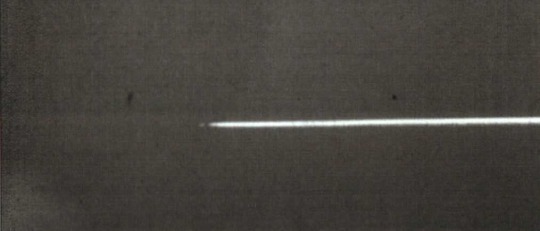
#NOTE THESE WILL NOT BE DAILY#I AM ONLY POSTING THEM AS I FIND THEM#jets go nyooooooom#FFFOTD#f-14 fun fact of the day#Operation Desert Shield#operation desert storm#F-14 Tomcat#Concorde#aviation#pretty cool ngl#airplanes#can you tell I’m bored at work?#Iraq later apologized for the uss stark incident stating that the pilot thought it was a Iranian tanker
28 notes
·
View notes
Text
Jamie Foxx, as U.S. Marine Staff Sgt. Sykes, leads Jake Gyllanhaal and the rest of his scout sniper platoon over a burm in Kuwait to discover the "Highway of death" during Operation Desert Storm.
(Jarhead, 2005)
19 notes
·
View notes
Text
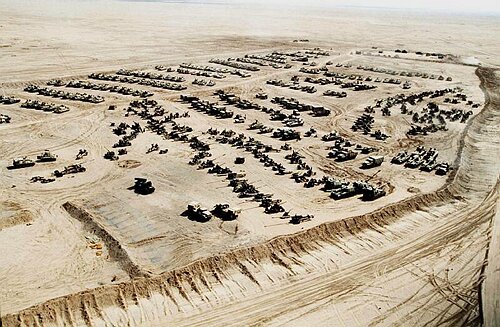
Operation Desert Shield / Storm
#Operation Desert Shield#Operation Desert Storm#Desert Storm#Gulf War#Iraq#Kuwait#military#US Army#war#tank#artillery
81 notes
·
View notes
Text

USS SAN JACINTO (CG-56) underway as it moves into position for an underway replenishment during Operation Desert Storm.
Date: February 9, 1991
NARA: 6486308
#USS San Jacinto (CG-56)#USS San Jacinto#Ticonderoga Class#guided missile cruiser#cruiser#warship#ship#Operation Desert Storm#February#1941#united states navy#us navy#navy#usn#u.s. navy#my post
75 notes
·
View notes
Note
i dislike your obsession with operation desert storm
oh yeah then why did a military campaign launched by a coalition led by the United States in response to Iraq's invasion of Kuwait in August 1990. The operation began with a massive air assault on Iraqi targets on January 17, 1991, followed by a ground offensive on February 24, 1991. The coalition forces quickly overwhelmed Iraqi defenses, leading to a swift victory. The operation achieved its primary objective of liberating Kuwait and pushing Iraqi forces out of the country. It marked a significant turning point in modern warfare, demonstrating the effectiveness of combined air and ground operations and establishing the dominance of the coalition forces.
3 notes
·
View notes
Photo
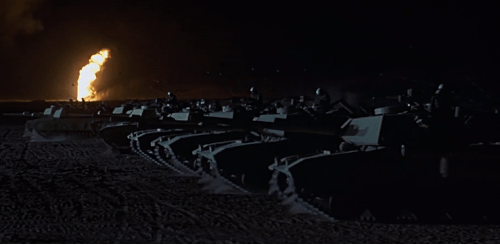

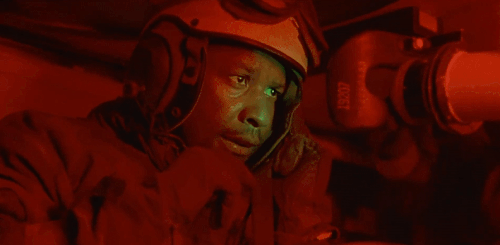

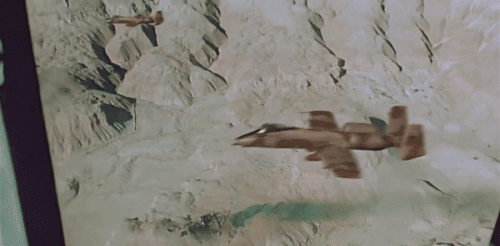
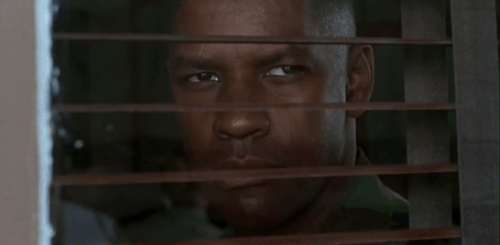


‘‘Kids, they do the damnedest things you know? They never think about the consequences. Imagine that― imagine going through life without thinking about the consequences.’’
Courage Under Fire (1996) dir. Edward Zwick
#movies nobody else cares about#meg ryan#denzel washington#lou diamond phillips#matt damon#drama#filmmaking#operation desert storm#first iraq war#films#movie night#war drama#mystery films#storytelling#far from the most militarily accurate film#but still a great story
26 notes
·
View notes
Text
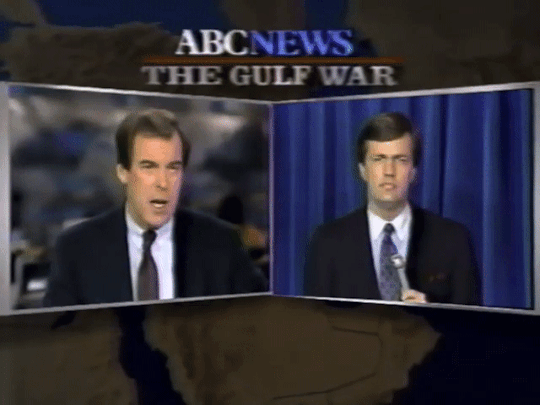
Peter Jennings and reporter Brit Hume discuss the presidential address marking the beginning of Operation Desert Storm
Coverage by ABC
9:14 PM EST (0314Z) 1991/01/16
[x]
#broadcastnewsarchive#broadcast news#history#abc#american broadcasting corporation#gulf war#operation desert storm#really it's just jennings doing the discussing#hume is busy trying to herd people around the camera's line of sight
3 notes
·
View notes
Text
VHS Archive: Operation Desert Storm - Behind the Scenes of the Allied Air Strike on Iraq (1991)
From the #VHS archive, watch history of the #GulfWar in Operation Desert Storm: Behind the Scenes of the Allied Air Strike on Iraq from 1991.
The Persian Gulf War in 1990-91 was heavily televised, not just from a reporting standpoint, but major TV networks aired battle footage provided by the military. Some have referred to the Gulf War as the “Video Game War” simply because of the daily footage onboard American bombers during the Operation Desert Storm offensive campaign and three of the largest tank battles in American military…

View On WordPress
2 notes
·
View notes
Text
National Security and Climate Change: Behind the U.S. Pursuit of Military Exemptions to the Kyoto Protocol [Part 8]
Continued from part 7
U.S. negotiators later described the provision as exempting “bunker fuels stored in overseas bases” [see Document 15]. The mainstream press depicted it as applying to military vessels traveling overseas or participating in such “operations as the recent relief mission to Somalia or the U.S.-led war against Iraq.” DOD officials described it as an issue “the Pentagon cared most about,” while environmental groups like the Natural Resources Defense Council called it a “big loophole.”[12] It was reported that the U.S. pushed for the proposal in an attempt to undermine Republican critics of the Kyoto Protocol. If the latter is true, it was unsuccessful because James M. Inhofe (R-OK), a conservative U.S. senator and one of the biggest opponents to the protocol, claimed that the agreement was a “political, economic, and national security fiasco.”[13]
This post is reprinted from the National Security Archive website and my History Hermann WordPress blog. Archived here and here.
U.S. diplomats called the inclusion of the exemptions a “major victory.” They argued that the Kyoto Protocol was consistent with the Pentagon’s goals, which included exempting bunker fuels and emissions from multilateral operations and allowing countries to account for those emissions in their own ways [see Documents 16, 17]. Other documents noted that operations like Desert Storm, in Kosovo, Somalia, and Grenada would not be included in national emissions totals [see Document 18].
During the Gulf War, hundreds of thousands of gallons of crude oil poured into the Persian Gulf, with the U.S.-led coalition forces and Iraqi forces accusing each other of causing the spill. It was later concluded that the spill caused “unprecedented environmental devastation,” especially on the coast of Saudi Arabia, salt marshes, sandy shores, rocky shores, and coral reefs, while the war was said to cause “serious environmental damage” to parts of the Mideast. During the same conflict, Iraqi military forces had set fire to hundreds of oil wells when retreating from advancing coalition forces, while during the conflict in Kosovo, water was polluted by oil derivatives. NATO strikes on oil refineries, pharmaceutical plants, and other facilities during the Kosovo War, caused significant environmental damage.[14]
© 2022-2023 Burkely Hermann. All rights reserved.
#bunker fuels#kyoto protocol#climate change#operation desert storm#somalia#james inhofe#nto#kosovo#kosovo war#1990s#iraq#oil spills#persian gulf#environmental damage
0 notes
Text
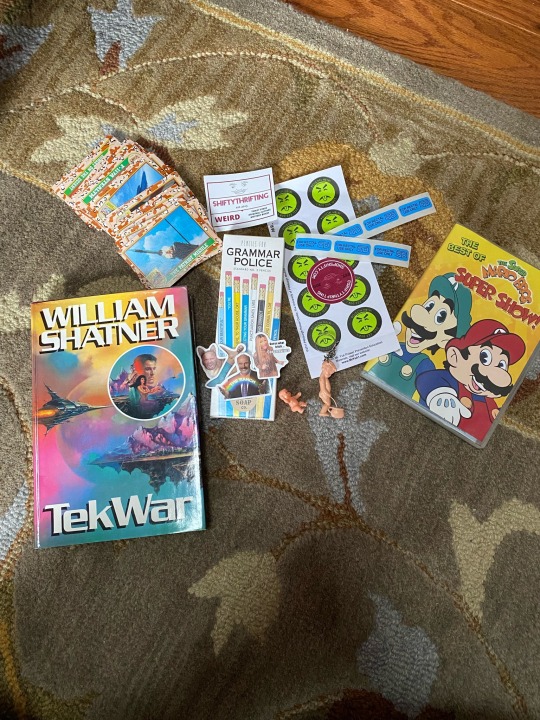
got an incredibly shifty box of stuff from @shiftythrifting today
#the mr. yuk stickers are the best#the operation desert storm cards will be ceremoniously burned#having read through the first few pages of the book i can absolutely say#it’s exactly the kind of book you’d expect shatner to write
223 notes
·
View notes
Text
"Who else gets a chance to see shit like this?"
(Jarhead, 2005)
9 notes
·
View notes
Text
Au where Casimir gets his foot in the door early, and Quiroz joins Renasci as a seventh-year
#in this au Quiroz is the one Celia meets on her train instead of Maddie#because the desert knights meticulously coordinate things that way#having grown up with the Desert Knights Quiroz not only has some serious preconceived notions about Celia#but he also has an intimate and detailed understanding of the Demsne’s goverment Celia’s role in it and the politics surrounding this#and he assumes Celia has thins knowledge as well#if immediately becomes clear that she is both a very nice person and completely clueless and Quiroz becomes friends for realsies#and we bypass a lot of the plots that operate on Celia being in the dark because Quiroz just. tells her things. fills her in.#realizing how much has been kept from her Celia confronts Professor Legaspi and by extension the guild#and because they can’t use the ‘protecting you’ excuse they tell her a lot of stuff that she turns around and shares with Quiroz#Quiroz then turns around and shares it with the Desert Knights so that when Indaba stages a kidnapping attempt at the end of the year#it is very successful and Celia ends up trapped in Huperpetra years early#because she’s early she doesn’t have her block breaking abilities and her escape attempts all fail#Quiroz has a change of heart and tries to help her in one of the attempts but is thwarted and locked in the cell with her#they have a big fight followed by a serious conversation followed by trauma bonding and they come together despite Quiroz’s betrayal#eventually the guild storms the place and the two of them use the distraction to get out#they encounter Celia’s family in the process and she is understandly stricken by this encounter#it holds them up significantly and Casimir finds them there in the dungeon#the guild don’t know where to look and therefore haven’t found them#so it’s just a two person smack down - Casimir vs. an eleven-year old#except no it’s not because Quiroz comes out of nowhere joining the fray#he kills Casimir (mostly by luck but partly because he’s a savage)#amd they all make it out alive (with that one exception lol)#and Celia gets to be happy with minimal stress#celias journey#quiroz bazemore#alternate universes
8 notes
·
View notes
Text

USS DETROIT (AOE-4) is flanked by USS SAN JACINTO (CG-56), left, and USS JOHN F. KENNEDY (CV-67) as the ships conduct an underway replenishment during Operation Desert Storm in the Red Sea.
Photographed by PH3 Falkenhainer on February 1, 1991.
NARA: 6467907
#USS Detroit (AOE-4)#USS Detroit#Sacramento class#fast combat support ship#support ship#USS San Jacinto (CG-56)#USS San Jacinto#Ticonderoga Class#Guided Missile Cruiser#Cruiser#USS John F. Kennedy (CV-67)#USS John F. Kennedy#Aircraft Carrier#February#warship#ship#Operation Desert Storm#1983#united states navy#us navy#navy#usn#u.s. navy#my post#Red Sea
64 notes
·
View notes
Text

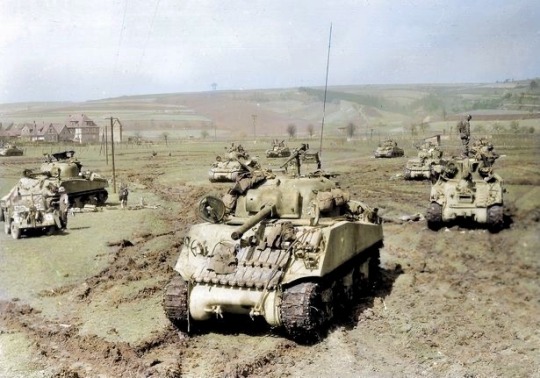
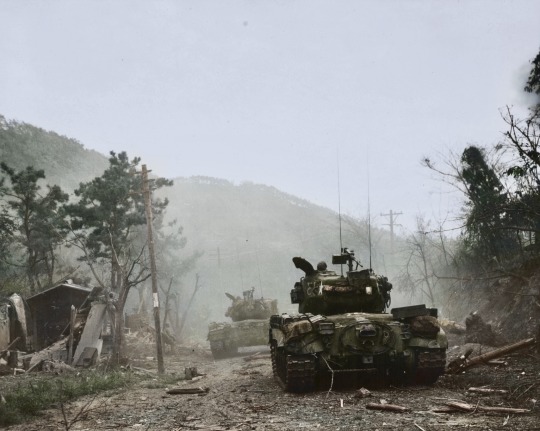



American tanks: The Great War, Second World War, Korean Conflict, Vietnam Conflict, Persian Gulf War, and Global War on Terror (Afghanistan).
#tank#tankers#us army#char#tahk#el tanque de guerra#kampfpanzer#wwi#wwii#Korea#Vietnam#desert storm#operation enduring freedom#gwot#renault#renault tank#sherman#sherman tank#patton#patton tank#abrams#abrams tank
24 notes
·
View notes
Text
Post Sept 11 US
I want to start a series of posts on US in the turn of the century. I think America's invasion of Iraq describes much of the current political landscape and, at least in my experience as someone who was young and impressionable in the early 2000s, so many things about US politics was hidden from public education (unsurprisingly).
For that reason, however, I think it's very useful to have ongoing discussion and evaluation of that history. Once I started doing my own research into this history, I discovered tons of information - first hand accounts, collations of reports, journalistic publications - that described a situation beyond even my cynical expectations.
During the Trump "presidency," I assumed that term was the most incompetent American leadership has yet been in modern history. While I think that may still be true, an investigation of the Iraq War years reveals an administration barely more coherent, and possibly more evil.
That said, my next 'x' number of posts will be concerning the Iraq War. I'll attempt to start at the beginning, and take us through the war years - hopefully providing a useful collection of historical anecdotes you can use to expand your own context and begin your own journey into this wild clusterfuck of a time.
Introduction out of the way, I'll keep the content of this post short by attempting to summarize the Bush Admin's internal reaction to 9/11, and provide some cursory context of pre-9/11 sentiment.
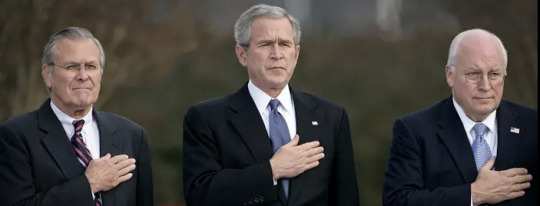
As you can imagine, this topic will involve these three individuals (and many more) quite often. From left to right you see: Donald Rumsfeld, Bush's SecDef and general sleazebag; George W Bush, the President from 2000-2009, and completely useless for nearly all of that span; and Dick Cheyney, Vice President and former Rumsfeld protegee turned aimless war hawk.
First, some light background: The Gulf War.
I want to start of by mentioning one of the many failings of my public education - essentially no mention of the Gulf War at all. You'll see why it went unmentioned as we go.
The Gulf War was born primarily out of the US' foreign policy from the Cold War. As an extremely brief summary, one of the US' primary strategies for combating Soviet interests was global resource control and manipulation. The actual tactical implementation of this broad strategy varied case-by-case, but in the Middle East, the US sought to control oil production and distribution through trade agreements, coercion, and hostile covert operations.
I could write books about the Gulf War (and many have), but in short: As part of America's Cold War operations in the Middle East, their covert operations were particularly brutal and led to very lopsided trade agreements for oil with Iran and Kuwait, and also to the arms provisioning of the Taliban who, at the time, were fighting the Soviets occupying Iraq (a conflict the US cherished). In Iran, the CIA - and the OPC in particular - essentially gave themselves an accountability-free playground. In the early '50s, an anti-imperial politician named Mohammad Mosaddegh took power in Iran and immediately nationalized Iran's oil production, effectively shutting the West off from Iranian oil completely.
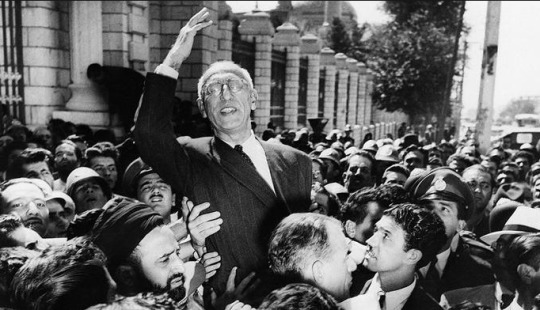
The Western powers obviously couldn't tolerate what they considered to be an upstart, "Third World" nation, self-governing in a way that didn't cater to Western interests. So, the CIA quickly sent over perhaps their least competent (and most confident) intelligence operative - Kermit Roosevelt Jr. - who had successfully lobbied for an American intervention into Iranian politics; a coup of Mosaddegh's government. After several comically unsuccessful attempts (which I encourage you to read about), Kermit finally succeeded. Mosaddegh's government collapsed, and the US and Britain installed a pro-Western PM in his place, Reza Pahlavi. The new government swiftly reversed many of Mosaddegh's policies in favor of new legislation, particularly national oil legislation. The new oil deal re-privatized Iranian oil, owned partially by Iranian companies and mostly by Western oil companies (like BP, the company Mosaddegh had removed with oil nationalization).
All this to say that the US (and Britain) practically through money into the Iranian shredder until the situation worked out in their favor. Considering their GDP, such massive final investiture meant virtually nothing for the Western powers, and this attitude would largely inform the West's diplomatic strategy in the Middle East going forward.
Regrouping to the topic of Iraq: In 1979, Pahlavi's government was overthrown in the Iranian Revolution. Saddam Hussein, who was and had been the Iraqi President, supported this revolution because Iraq and Iran had been constantly engaged in border disputes. Saddam supposed that a revolution would weaken Iran and make it easier to achieve the territory gains he'd been attempting for years. Instead, the new Iranian government was less predictable than Saddam had hoped. The new Iranian leader quickly called for a broader Islamic Revolution, and encouraged revolutionary activity in Iraq throughout the early part of the decade. Very long story short (I highly recommend reading more on this topic) the antagonism between Iran and Iraq spill over into open military conflict, and Iraq decides to invade in September of 1980 and fought a brutal and chaotic war involving multiple Geneva violations. In the end, despite Iraqi propagandist claims, the war was extremely unrewarding for both parties. Both Iran and Iraq exited the war billions of dollars poorer with suffering domestic infrastructure and belligerent populations.

There's more to say on this in a later post, but for our immediate understanding: Saddam needed money badly after the war, and looked to the West, who had been historically supportive of his government (the West considered Iraq to be an important regional counter to the Iranian revolutionary spirit). America, however, after bankrolling Iraq during the war against Iran, was desperately attempting to distance itself from the situation and take a posture of the patriarchal mediator. This happened for a lot of reasons, but a major one being that Saudi Arabia and Israel were becoming nervous about the Middle East, and the US considered them crucial allies and would not risk disturbing them. So, left to his own devices, Saddam panicked.
Part of the reason for invading Iran was to seize Iranian oil production and boost the Iraqi economy. This wan not achieved during the invasion, but Saddam saw another opportunity. Directly to Iraq's south lies Kuwait - a small but prosperous nation, rich in oil and poor in arms. Thinking (barely) on his feet, Saddam decides to invade Kuwait in an attempt to make back his losses from his Iranian invasion by seizing and selling Kuwaiti oil.
I mentioned earlier that the US was very nervous about more conflict in the Middle East, and in the early 90s began running war games simulating a defense of Saudi Arabia from a hostile Iraq. The determination was that such a campaign would be extremely costly and very difficult to justify to the American public, and this conclusion heavily informed the H.W. Bush Administration in the year Saddam chose to invade Kuwait.
I think it's important to note the dramatic change in direct American intervention into the Middle East with H.W.'s administration. During the Cold War, the US had a more passive stance - choosing proxy wars and clandestine campaigns over direct military commitments. In the 90s however, everything seemed to change.
Saddam's invasion of Kuwait begins on August 2, 1990. The next day, President Bush Sr. was on television declaring his committed opposition to Iraq's aggression. Less than after the war in Kuwait began, American fighter squadrons have landed in Saudi Arabia, the first of many American military assets to be deployed in the conflict, and a dire foreshadowing of the beginning of the Gulf War in January '91.
My next post will focus entirely on the Gulf War, and mostly the American shift in attitude towards Saddam and the idea of direct military engagement in Middle Eastern society.
Thank you for reading! Please look forward to my next post.
#us history#american history#political history#middle east#gulf war#operation iraqi freedom#desert storm
6 notes
·
View notes
Text
i think the most fucked up fun fact about ethan hunt is that he n my dad technically served in the same war
#mission impossible#ethan hunt#operation desert storm babyyy#they were both in the gulf war#shit's crazy#dropped my jaw when i read hunt's wiki#shit had me ??!?!?!
2 notes
·
View notes